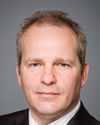Yes, that's exactly what I'm saying. I think especially with IRPA, the current points system under it is particularly poorly suited to health professions, where the provinces are the principal payers. For things in the private sector, IRPA works very well. On many dimensions, IRPA is better than what came before it, but for regulated health professions, IRPA, I would argue, is worse than the legislation that came before.
Under the points system before, there were occupational points. It was virtually impossible for physicians to immigrate in the economic class. They could come as family class, as refugees, as spouses, but it was very, very hard. This was in the days when we thought we had a surplus. There was a so-called perceived surplus of physicians.
Under IRPA, at least before the most recent ministerial instructions, there were no occupational categories. So physicians became prime candidates for the points system and a massive number of them entered Canada and the provinces did not want to hire them. There was a massive surplus of international medical graduates and a large number of people complaining that they couldn't find jobs. They'd been admitted under the point systems, but the points system didn't coordinate at all with provincial needs.
My argument is to take regulated health professionals, who are primarily paid by provincial governments, out of the federal points system—because the coordination problem between the provinces and the federal government is really, really difficult—and put them in the provincial nominee program.
I'm not saying to take this out of the system altogether. We have a stream that works very efficiently. Although there are some problems with the provincial nominee program, it works pretty well. But put the regulated health professionals, who are primarily paid by the provinces, into that stream.
The provinces regulate the regulatory colleges that do credential recognition. They do health human resource planning. They know what's needed. They know the credentials. Let them manage it. They're close to the ground; they can do it better.



